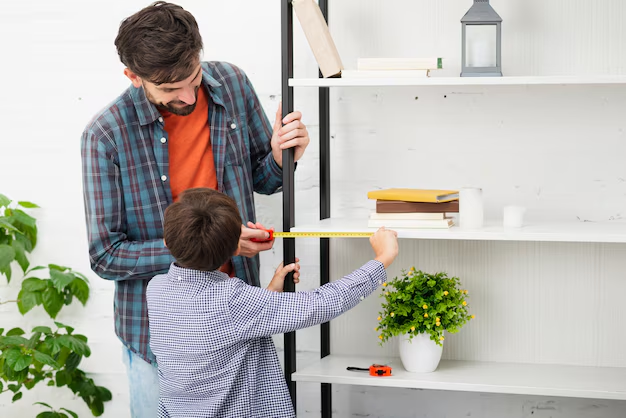How to Calculate Cubic Feet for a Refrigerator: A Complete Guide
Have you ever found yourself standing in an appliance store, mesmerized yet bewildered by rows of refrigerators, each tagged with perplexing cubic feet measurements? Understanding how to figure out the cubic feet of a refrigerator isn’t just vital for fitting the appliance in your home; it’s also crucial for ensuring it meets your storage needs. This comprehensive guide will walk you through the process, shedding light on what those numbers mean, why they matter, and how you can confidently calculate them yourself.
📏 Understanding Cubic Feet
Cubic feet is a unit of volume that measures how much space there is inside a refrigerator. It essentially tells you how much food and other items your refrigerator can store. This measurement considers the entire compartment where you can place your groceries, from the freezer section to the fresh food area.
Why is Cubic Foot Measurement Important?
- Space Planning: Knowing the cubic footage is essential when planning kitchen space. You need to ensure the refrigerator fits in the intended location without disrupting the flow or accessibility of your kitchen.
- Storage Needs: Estimating the right size helps prevent overbuying a refrigerator that is too large or selecting one that is too small to meet your culinary demands.
- Energy Efficiency: Generally, larger refrigerators consume more energy. Choosing the correct size can not only save money on your utility bills but also contribute to more sustainable living practices.
📚 How to Calculate Cubic Feet
Calculating the cubic feet of a refrigerator requires you to measure its interior dimensions: width, height, and depth. Here’s how you can go about it:
Step-by-Step Guide to Measuring
Empty the Refrigerator: To achieve precise measurements, it’s best that you empty the refrigerator, removing shelves and drawers if possible.
Measure Interior Width: Use a measuring tape to find the width of the fridge from one wall to the other (side to side).
Measure Interior Height: Measure from the top to the bottom of each compartment.
Measure Interior Depth: Measure the depth from the rear wall to the lip of the shelf or door, whichever is shorter.
Calculate Cubic Feet: Multiply the width, height, and depth (in inches). Then, divide the total by 1,728 (as there are 1,728 cubic inches in a cubic foot) to convert to cubic feet.
[ ext{Cubic Feet} = frac{ ext{Width (in inches)} imes ext{Height (in inches)} imes ext{Depth (in inches)}}{1728} ]
Tips for Accurate Measurements
- Consistency: Always measure in the same units (inches) to avoid conversion errors.
- Account for Obstacles: Adjust for elements like built-in ice dispensers or adjustable shelves that might impact the available volume.
- Double-Check: Re-measure if necessary to ensure precision.
🛠️ Tools You’ll Need
- Measuring Tape: A flexible measuring tape is preferred for accuracy as it can bend around the contours of the fridge.
- Calculator: Utilize either a physical calculator or a smartphone app for quick computations.
🤔 What's the Right Size for You?
Choosing the right refrigerator size isn’t only about cubic feet. Consider the practical implications of size and capacity in your kitchen lifestyle.
Considerations for Choosing the Right Refrigerator Size
- Household Size: Larger families might lean towards refrigerators with more cubic footage to store sufficient weekly groceries.
- Cooking Habits: Those who frequently cook from scratch or meal prep would benefit from greater storage.
- Dining Trends: If you dine out more frequently, a smaller model might suffice.
Do’s and Don’ts
- Do measure your kitchen space thoroughly before selecting a refrigerator, ensuring the surrounding area is accounted for.
- Don’t forget to consider the refrigerator door’s swing and handle protrusion; these play into the total spatial requirements.
- Do factor in your future needs, such as any potential increase in family size or culinary interests.
📈 Increase Energy Efficiency and Longevity
Once you’ve selected the perfect refrigerator size, maintaining its energy efficiency and ensuring it lasts as long as possible is important.
Energy Efficiency Tips
- Proper Placement: Position your refrigerator away from heat sources like ovens or direct sunlight.
- Ventilation Space: Leave enough space around the refrigerator for air to circulate, preventing overheating.
- Temperature Settings: Set your freezer at 0°F and the fresh food section at about 37°F for optimal energy saving.
📋 Quick Reference Summary
🌟 Key Takeaways for Choosing and Using Your Refrigerator Wisely:
- Measure accurately: Width, height, and depth must be correctly measured and converted into cubic feet.
- Match cubic feet to household needs: Consider family size and cooking habits for the best fit.
- Maintain energy efficiency: Proper placement and temperature settings optimize performance.
| Measurement Process | Tip |
|---|---|
| Measure in inches | Consistent unit measurements matter |
| Empty the refrigerator | Ensures accuracy |
| Calculate using formula | Final step: Divide by 1,728 |
| Double-check all dimensions | Accuracy prevents errors |
| Consider future needs | Growth planning informs decision |
💼 Final Thoughts on Making an Informed Purchase
Deciphering the cubic feet of your refrigerator involves more than a simple calculation; it encompasses a deep understanding of your household's lifestyle and space planning abilities. By following the outlined steps and considering practical points discussed in this guide, you’re better prepared to make an informed decision suited to your personal needs and preferences.
Remember, choosing a refrigerator is not just about the numbers—it’s a commitment to ensuring your kitchen functions seamlessly and supports your ongoing culinary adventures. With this knowledge in hand, embark confidently on your next refrigerator purchase.
